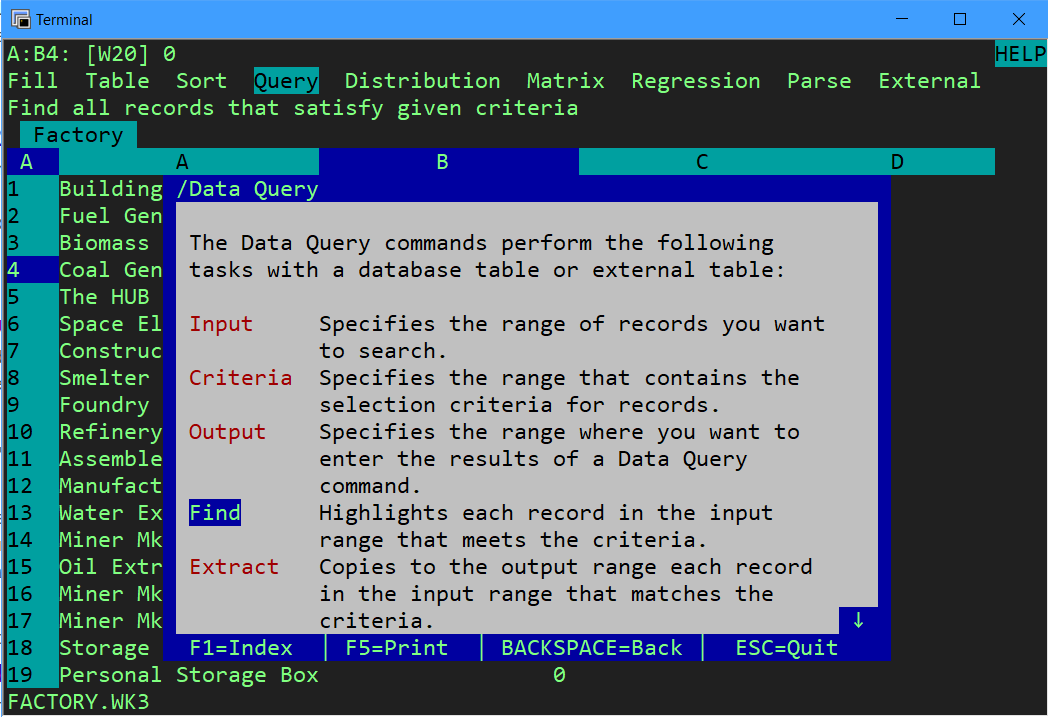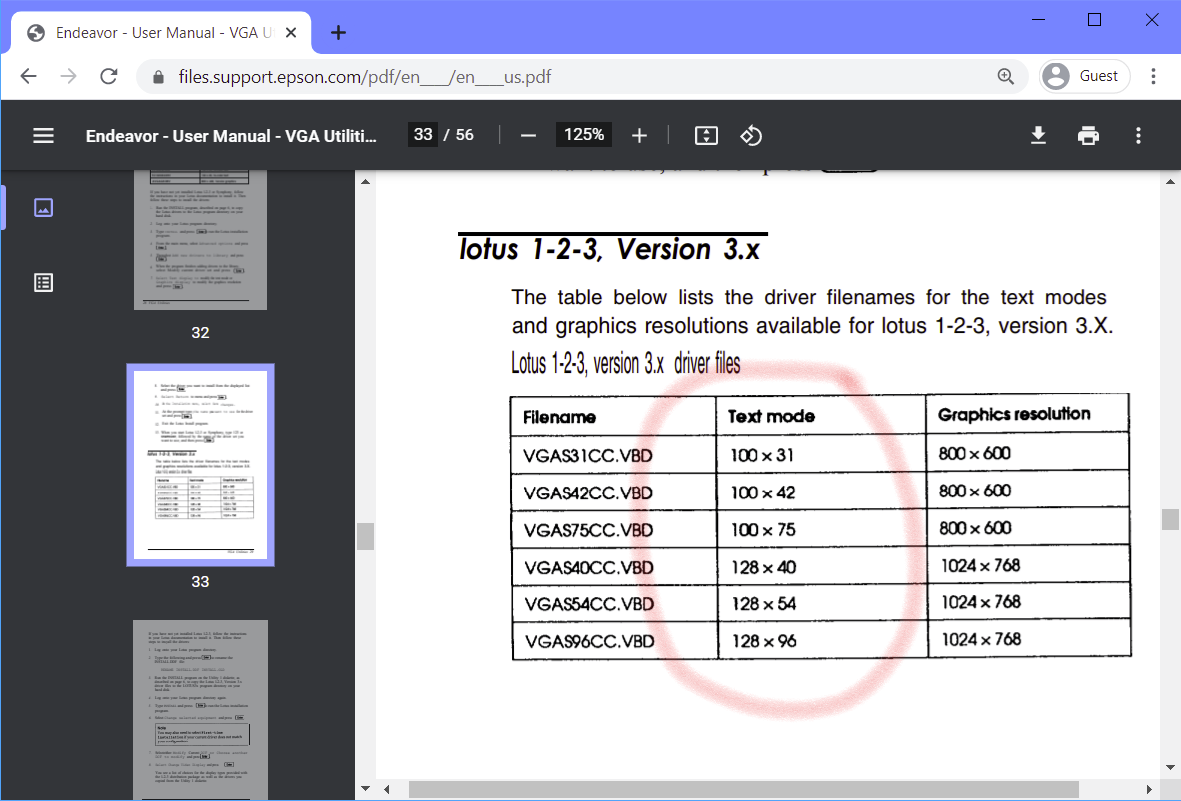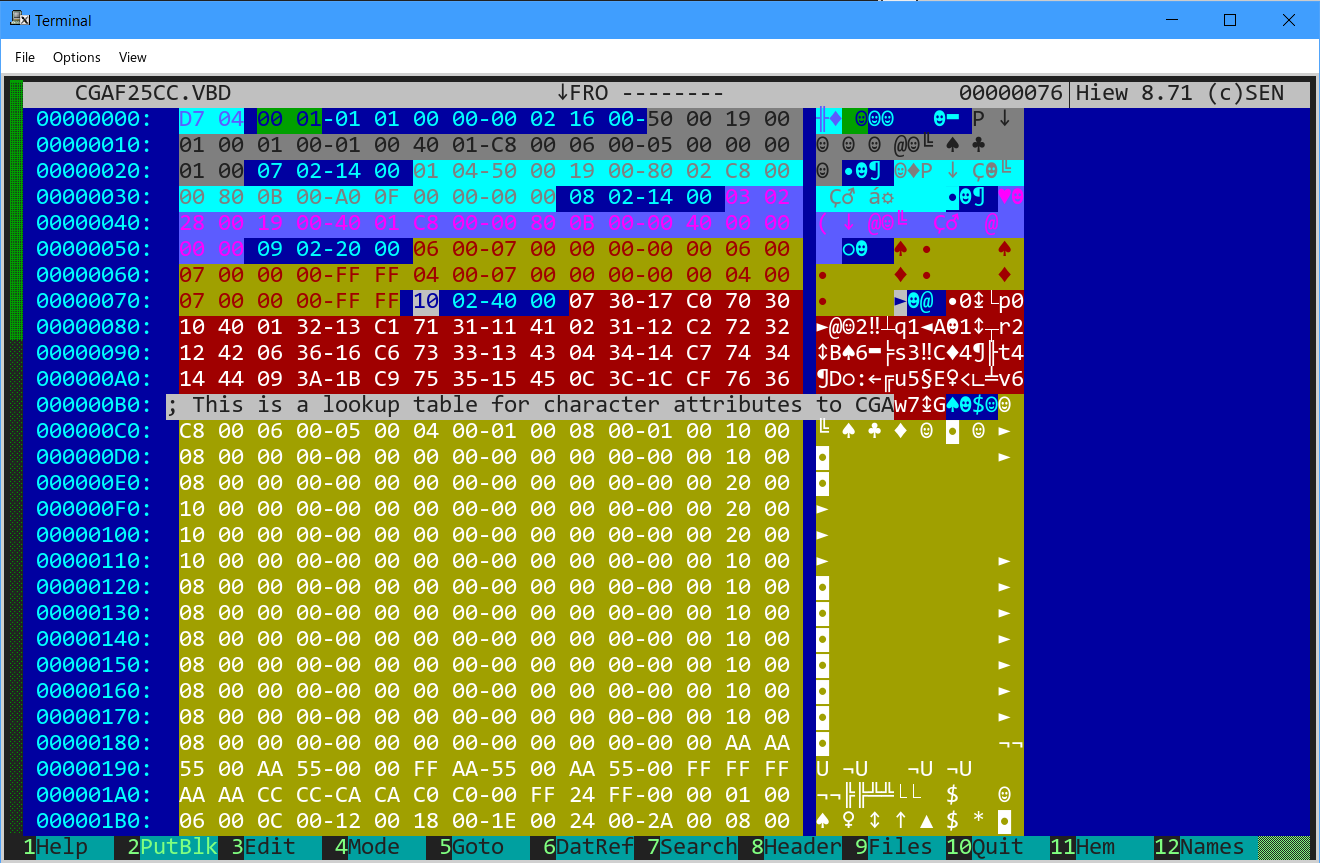History
Lotus 1-2-3 was ported to a bunch of systems, including OpenVMS, Xenix, and even System/390. In 1991, Lotus released a version for SunOS4 on SPARC.
A few years later, a Lotus engineer uploaded a patch for a file management bug in the XALERT component that affected the 1.2 update. Luckily, they forgot to remove the STABS data, leaving incredibly rich debugging data.
typedef short int lmbcs_type;
typedef short int platform;
typedef short int memory_type;
struct envblk_ { /* size 68 id 9 */
short int envsize; /* bitsize 16, bitpos 0 */
short int pfid; /* bitsize 16, bitpos 16 */
short int csid; /* bitsize 16, bitpos 32 */
short int pad; /* bitsize 16, bitpos 48 */
short int maps; /* bitsize 16, bitpos 64 */
short int type; /* bitsize 16, bitpos 80 */
mptr nulh; /* bitsize 32, bitpos 96 */
long unsigned int maxsize; /* bitsize 32, bitpos 128 */
unsigned char *applid; /* bitsize 32, bitpos 160 */
lhdl gabinfo; /* bitsize 32, bitpos 192 */
char *regfile; /* bitsize 32, bitpos 224 */
mptr (*get) (/* unknown */); /* bitsize 32, bitpos 256 */
short int (*free) (/* unknown */); /* bitsize 32, bitpos 288 */
lhdl (*map) (/* unknown */); /* bitsize 32, bitpos 320 */
void (*unmap) (/* unknown */); /* bitsize 32, bitpos 352 */
lhdl (*alloc) (/* unknown */); /* bitsize 32, bitpos 384 */
short int (*dealloc) (/* unknown */); /* bitsize 32, bitpos 416 */
short unsigned int (*load) (/* unknown */); /* bitsize 32, bitpos 448 */
short unsigned int (*unload) (/* unknown */); /* bitsize 32, bitpos 480 */
short unsigned int (*syscall) (/* unknown */); /* bitsize 32, bitpos 512 */
};
typedef struct envblk_ /* id 9 */ envblk;
typedef long int LpiSTATUS;
...
This was the only file (trust me, I checked them all) that had any debugging data left on the whole ftp!
Now, this file was for a different architecture, operating system, compiler, release and was a long obsolete format. But, the clues it contained about the driver API were invaluable, and saved me so much time.
$ file alert.so1
alert.so1: SPARC demand paged shared library not stripped
The file was so old that to read the data I had to find an older version of binutils that still supported a.out-sunos-big. Luckily that worked and it was able to reconstruct a ton of useful data.
Here is the full recovered data, if you’re interested.
More Luck
I got another stroke of luck, I found a third party printer driver on an old SUNET archive for the Siemens Highprint 7400. Remarkably, it had some ancient Codeview debugging data left in it.

Here is a picture of a lady printing some rorschach tests with her new Highprint 7400, for some reason.
The debugging data was so old, I struggled to find a tool that could parse it. The data had a version code NB02, which means they probably used link.exe version 5, released around 1988. I tried TDUMP, CVDUMP and even SYMDEB, and none recognized it. I did eventually find an old enough version of Codeview that could read it, but it had no way to save output to a file except “printing” your backlog, and the backlog wasn’t big enough to hold all the data!
I had to script a DOS emulator to scrape the data out a page at a time! I can’t tell you how much time I wasted getting this working, but it was worth it, it gave some valuable hints about how the DEVPRIM (Device Primitive) API worked.
Publics for: _DVTBL!*
Symbols for: L13PSI74!*
3CD5:016E struct psd
3CD5:006E struct GdvEntryTbl1_ pcf
3CD5:01DC unsigned int print_head_height_dots
3CD5:000A char grph_init_string[]
3CD5:0158 char gr_eol_str[]
3CD5:016C unsigned int col_res_num_pos
3CD5:0020 char start_grph_str[]
3CD5:0050 char last_grph_lf_str[]
3CB1:001C unsigned char far * graph_data_ptr
3CD5:0064 char gr_eog_str[]
3CD5:0006 unsigned long graph_data_size
3CD5:0000 unsigned int scan_width
3CD5:001E unsigned int stripNum
3AC8:0006 unsigned int PROC hmu_len()
[BP+0008] unsigned char far * lmbcs_str_buf
[BP+0006] unsigned int lbuf_len
[BP-0006] unsigned int return_hmu
[BP-000A] unsigned char far * bundle_ptr
[BP-0004] unsigned char far * orig_ptr
3AC8:0148 void PROC finish_down()
[BP+0006] unsigned int distance
3CB1:000C char max_feed[]
[BP-0006] int i
[BP-0004] unsigned char far * p
3AC8:01A4 int PROC graphics_init_printer()
Here is the full recovered data.








